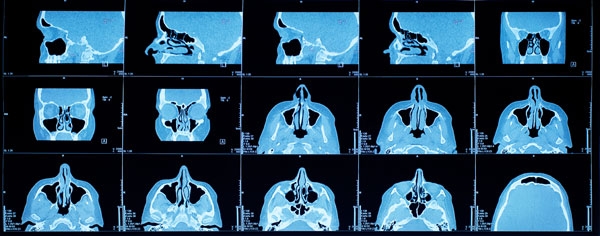Development of the sphenoid sinus begins at the age of three years. The sinus sits in the sphenoid bone. Capacity, size and shape of the sinus vary from person to person. The sphenoid sinus walls are located next to the cavernous sinuses, dura mater, optic canals and pituitary gland. The walls can be ultra thin. The infection and / or obstruction of the sinus is called sphenoid sinusitis, which is not common. However, sphenoid sinusitis is generally misdiagnosed. This infection-sinus may lead to sub acute or acute sphenoid sinusitis.
Acute sphenoid sinusitis is uncommon. Acute sphenoid sinusitis generally occurs with pansinusitis. Central, frontal, occipital or vertical headache is common during acute sphenoid sinusitis. The headache may increase while bending forward. Staphylococcus aureus is the common cause of the acute sphenoid sinusitis. Chronic sphenoid sinusitis leads to uneasiness in retro-orbital area or a headache.
The sphenoid sinus is prone to neoplastic, infectious, inflammatory or expansile processes. The neoplastic process means abnormal growth of a tissue or a tumor. Accumulation of pus in the sinus is pyocele, which is infectious. The inflammatory process is referred to as Wegener granulomatosis. The sphenoid sinus inflammation accompanied by mucormycosis increases severity of the sinusitis.
Diagnosis
Patients of solitary sphenoid sinusitis may not have nasal problems, diagnosing becomes difficult. Generally, this infection-sinus is diagnosed when complications begin. CT scan is the most suitable method to diagnose sphenoid sinusitis.
Symptoms
- Fever
- Loss of vision
- Purulent discharge
- Sleep related problems
- Progressive headache
- Headaches in temporal region (bitemporal), back of the head (occipital) or eye-socket (retro-orbital) are characteristic to the isolated sphenoid sinusitis.
- Headaches may become severe.
- Headaches worsen with movement of the head and disturb sleep. Aspirin does not relieve these headaches.
Complications
If the infection-sinus is not diagnosed appropriately or treated properly, deadly complications may occur. Likely complications include orbital abscess, orbital cellulites, orbital edema, cerebral abscess, cavernous sinus thrombosis, meningitis, mucocele, pituitary insufficiency and superior sagittal sinus thrombosis. Although mucoceles are rare, they affect vision of the patient.
A mucocele is a kind of cyst containing mucus. Adhesions, tumors and polyps may obstruct drainage from the sinus system, resulting in formation of mucoceles. Continuous inflammation in sinus ostia for long time may also cause mucoceles. The mucoceles exert pressure on the walls of the sinus, eroding the surrounding bone and causing headaches.








